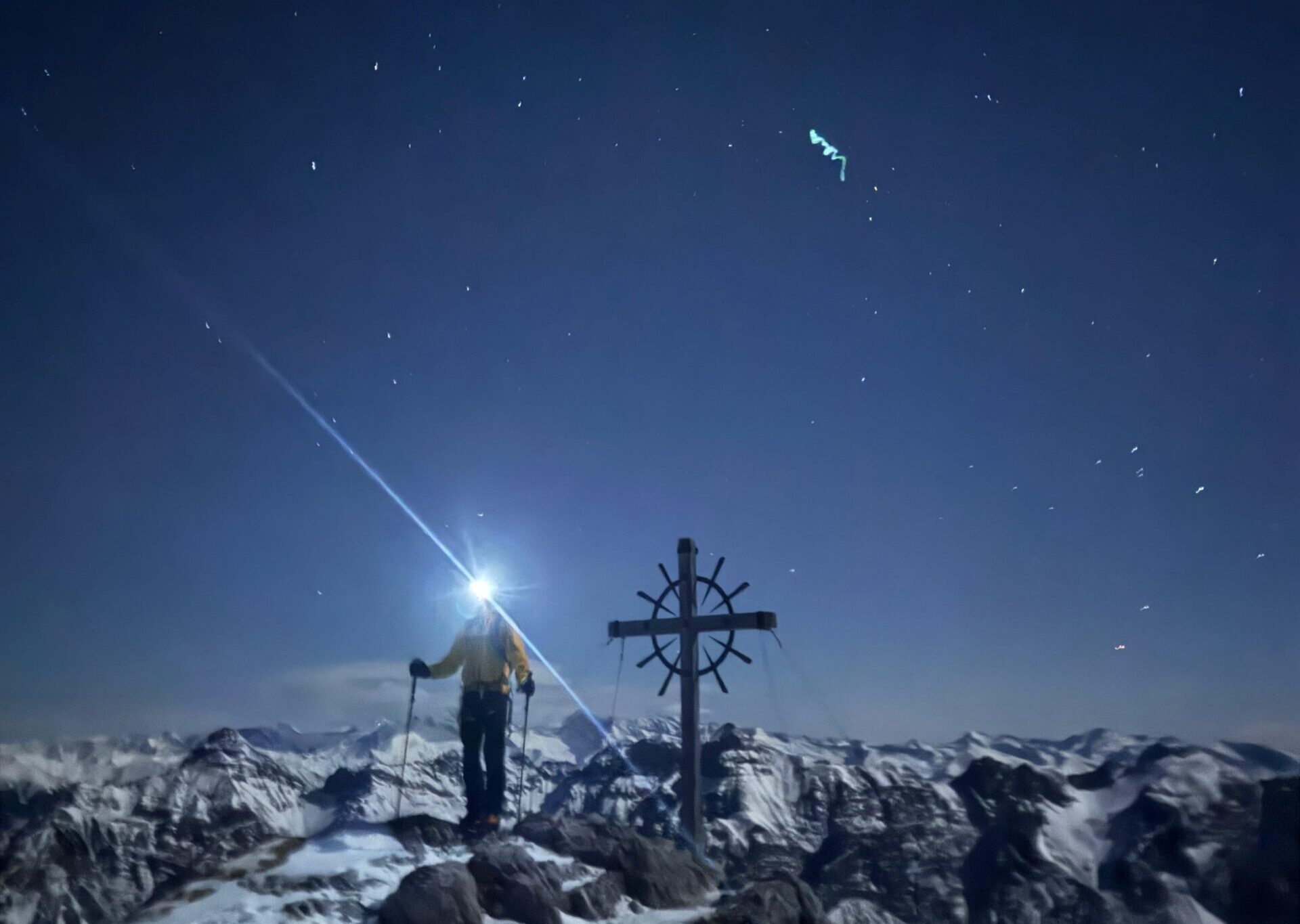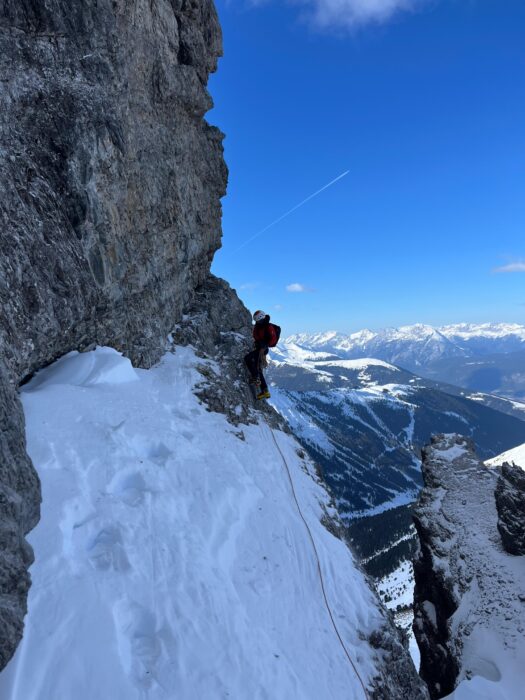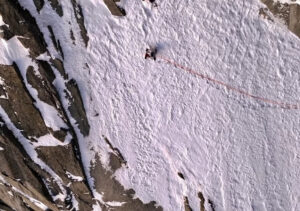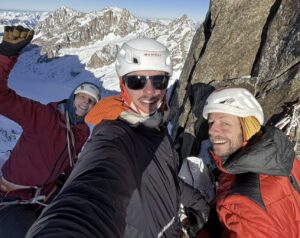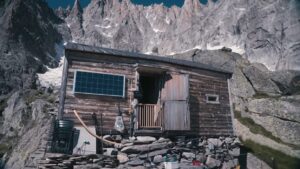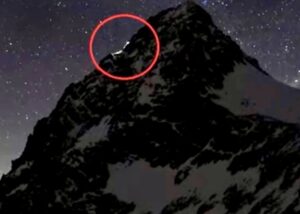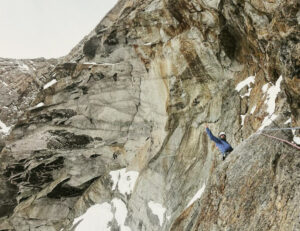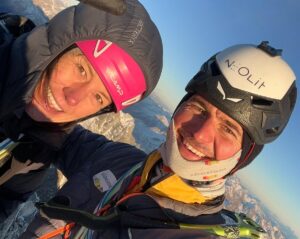With few new lines available in the Alps, ambitious alpinists have turned to multi-peak, non-stop traverses. Earlier this week, Martin Sieberer and Lukas Waldner of Austria completed the first one-day winter traverse of the Kalkkogel range in the Austrian Tyrol.

The Kalkkogel range from the north. Photo: Wikipedia
The Kalkkogel are often called the North Tyrolean Dolomites, because of their jagged dolomitic rock. In summer, it’s a well-known traverse for fit climbers, but the challenge becomes more serious in winter because snow covers the spires, gaps, and ridges.
As far as the Sieberer and Waldner know, the few previous winter parties took at best over two days to complete it.
“The outing has never been done before in one push from the valley,” Sieberer told ExplorersWeb.
First tentative attempt
“Lukas and I tried the traverse for the first time on January 14, but finding the right route, locating the best rappels, etc., took too long,” Sieberer explained. “We finally bailed when night fell, although we had already managed the difficult part.”
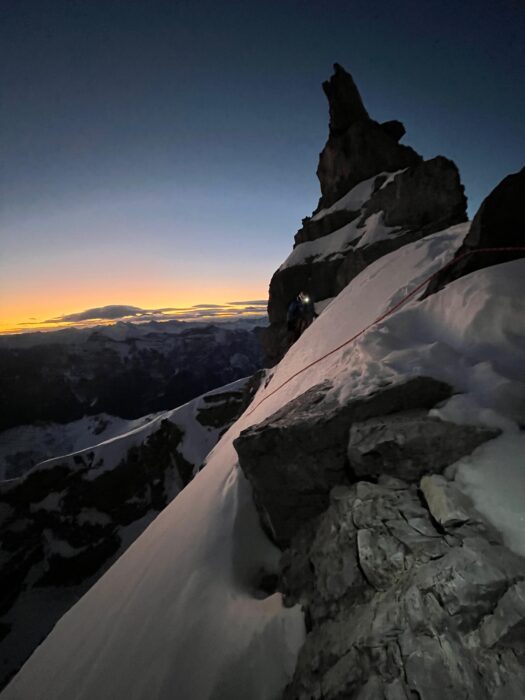
Knowing the rappel points was essential to success. Photo: Martin Sieberer
Early start
The pair launched their successful push last Sunday at 2:30 am, one hour earlier than on their first attempt. They set off from the parking lot of the Schlick 2000 ski resort.
“First, we went up the ski slope, then traversed over the first two summits and climbed the Mandelgrat to Schlickerseespitze,” Waldner wrote.
At 2,804m, the Schlickerseespitze is the highest point of the range. The climbers reached it at 8 am, then continued along the ridge and over peaks and smaller towers.
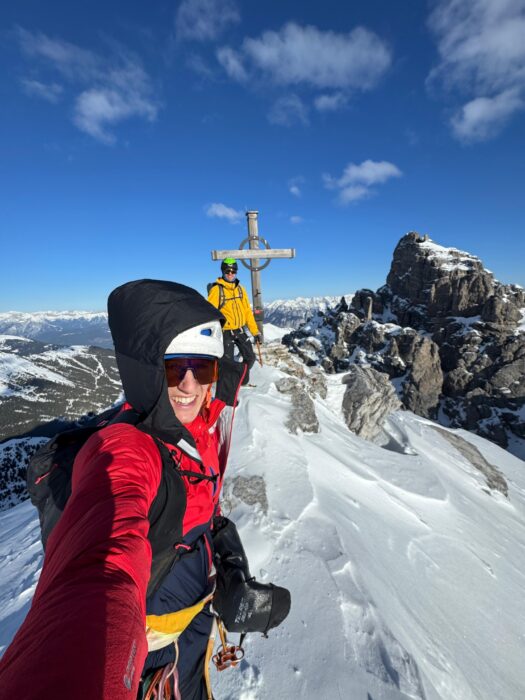
The climbers on one of the 16 summits. Photo: Martin Sieberer
“Throughout the day, we made steady progress,” Waldner recalled. “Some rappels were interesting due to the strong wind, causing the ropes to hang more horizontally than vertically.”
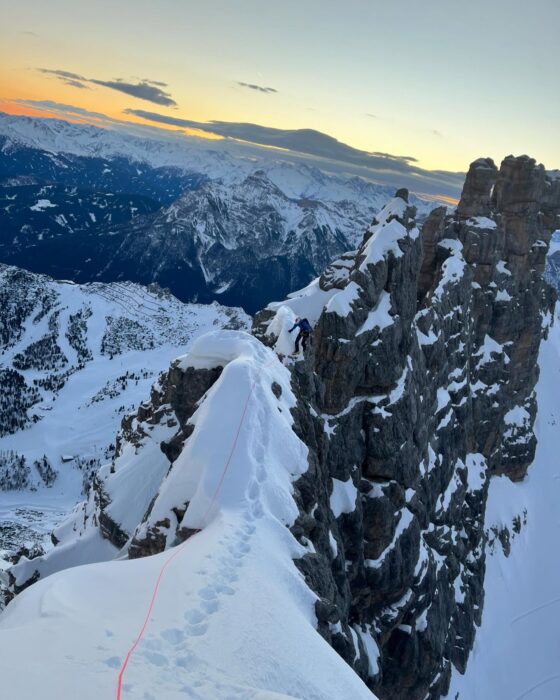
A sharp ridge section. Photo: Martin Sieberer
“Thanks to [our research] and some tracks we had left during the previous attempt, we were quite fast and reached our previous bailing point nearly three hours earlier,” Sieberer told ExplorersWeb. “The rest of the traverse was not difficult, but very deep snow on the east faces made it very strenuous.”
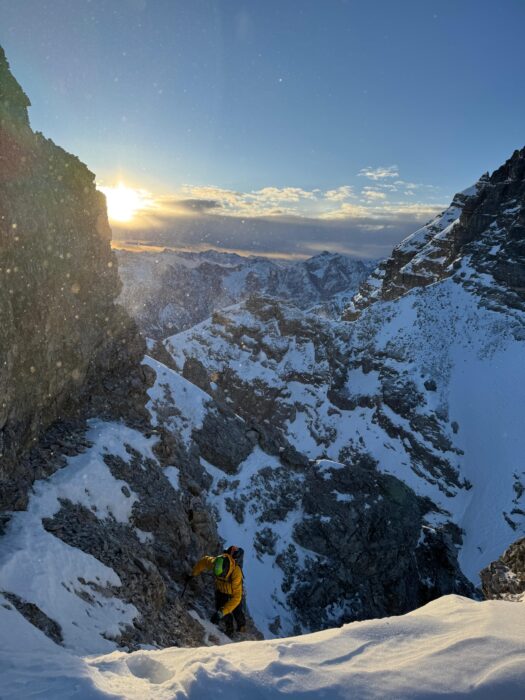
The last part of the traverse. Photo: Martin Sieberer
Sixteen peaks
“The last few hundred meters were quite exhausting, but we knew that we’d make it,” Sieberer wrote on social media. “We reached the last col, Halsl, at sunset and tracked up to the last easy summit, Nockspitze, which we reached at 6:30 pm. Then we descended to Götzens after 17.5 hours on the go.”
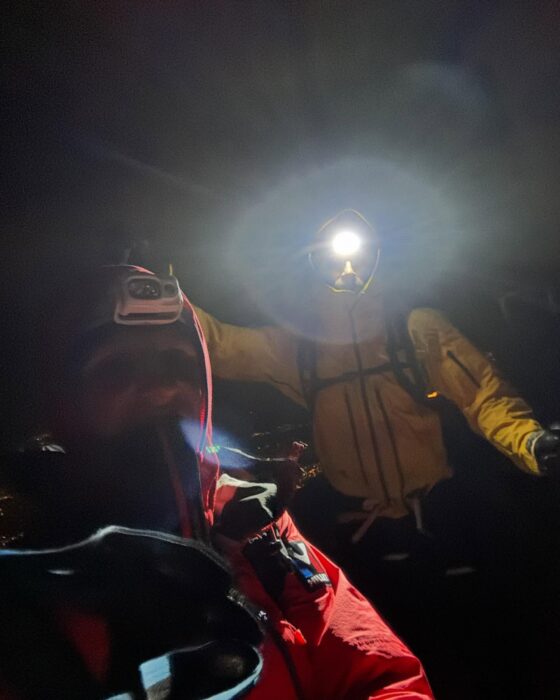
At the end of the traverse. Photo: Martin Sieberer
The Kalkkogel includes 15 individual peaks, although the climbers counted 16 separate summits. They wanted to cross “all the main summits and some minor ones that seemed important,” including some needles and towers, Sieberer explained. There were too many to top out all of them. The traverse totaled 4,430 vertical meters uphill and 31km of distance.
Insider tips
“Times are improving, and it’s becoming clearer what can be done in a single day,” Waldner noted about these increasingly popular winter traverses.
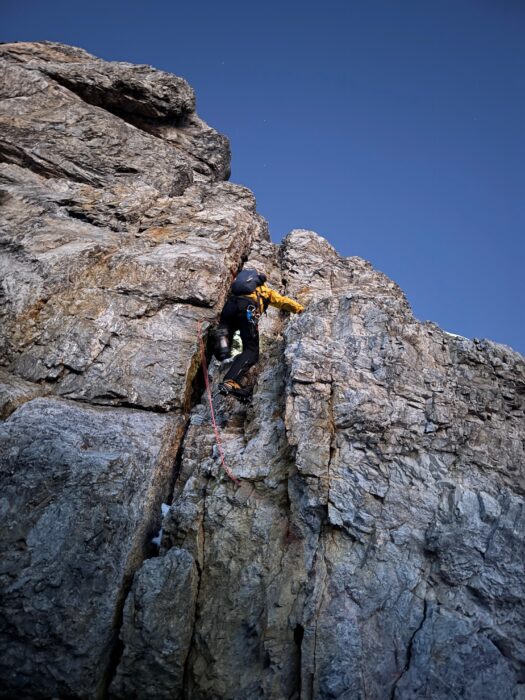
One of the pitches on rock. Photo: Martin Sieberer
Sieberer said that these activities capture the essence of modern, “light and fast” alpinism, adding:
When I am in the mountains [on one of these traverses], I don’t carry bivouac gear or unnecessary equipment. That makes it easier to move fast. Therefore, logistics is crucial to success. Also a good and fit partner is important, since you can take turns breaking trail, which is important in winter. Lukas and I are a well-rehearsed team, otherwise I don’t think it would have been possible. Eighty to ninety percent of the traverse is alpine terrain with no room for error, since we soloed (used no ropes) 99% of the time.
A mixed passage on the Kalkkogel traverse. Photo: Martin Sieberer
Winter traverses like this are only possible when the conditions are right. We did not have the best conditions but it was good enough, since there was little snow on many parts of the traverse. We were quite amazed that we reached the last summit so early and we think even more is possible.
